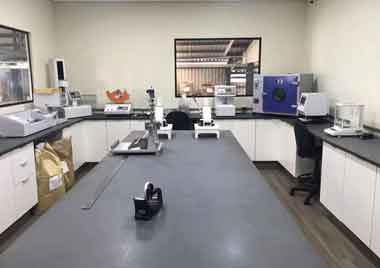Font Size:

2.1 High Carbon Alcohol Defoamers: Also termed degassing agents, these defoamers remove small foam adhering to fiber surfaces. Structurally akin to surfactant molecules, fatty alcohols feature an amphiphilic structure with a long-chain hydrocarbon segment and a hydrophilic hydroxyl group. The hydroxyl groups infiltrate fiber surface hydroxyl groups, exerting pressure on adsorbed bubbles, facilitating their detachment. Freed bubbles amalgamate and rise due to buoyancy. Fatty alcohol molecules also adsorb onto gas-liquid interfaces of bubbles, disrupting molecular film tension equilibrium, leading to bubble film thinning and rapid rupture.
2.2 Polyether Defoamers: These defoamers self-emulsify in water, adsorb onto foam surfaces, lower foam surface tension, and induce foam rupture. Being non-ionic surfactants, their efficacy is temperature-dependent, requiring specific temperature ranges for optimal performance.
Long-term application insights: ① For sized paper production or medium to low-speed paper machine systems, incorporating high carbon alcohol defoamers ensures manageable foam control without compromising adhesive effects, all while maintaining cost-effectiveness. ② In sized or coated paper manufacturing or high-speed paper machine setups, employing polyether defoamers yields superior and faster defoaming outcomes.
Qingdao JIERUIXIN Machinery & Technology CO., Ltd, offers a diverse range of defoamers and associated chemicals tailored for papermaking and coating processes, boasting ample inventory and offering free samples.
Raw material properties of BOPP film
2023 Whiteboard Paper Market Analysis: Fluctuations and Recovery
Carbonless paper coating chemicals components
2024-04-18The Impact of Stiffness and Density on the Quality of Coated Paper
2024-04-18Quality index of coated base paper
2024-04-18Explore the development of the thermal paper market since 2023: Trends, challenges and opportunities
2024-04-18Unveiling the Divergence: Boiler vs Steam Generator in Paper Drying
2024-04-18What is the thermal paper coating machine line?
2024-04-18Why does the thermal paper coating machine request calender?
2024-04-18Carbonless paper coating chemicals components
2024-04-18The Impact of Stiffness and Density on the Quality of Coated Paper
2024-04-18Quality index of coated base paper
2024-04-18